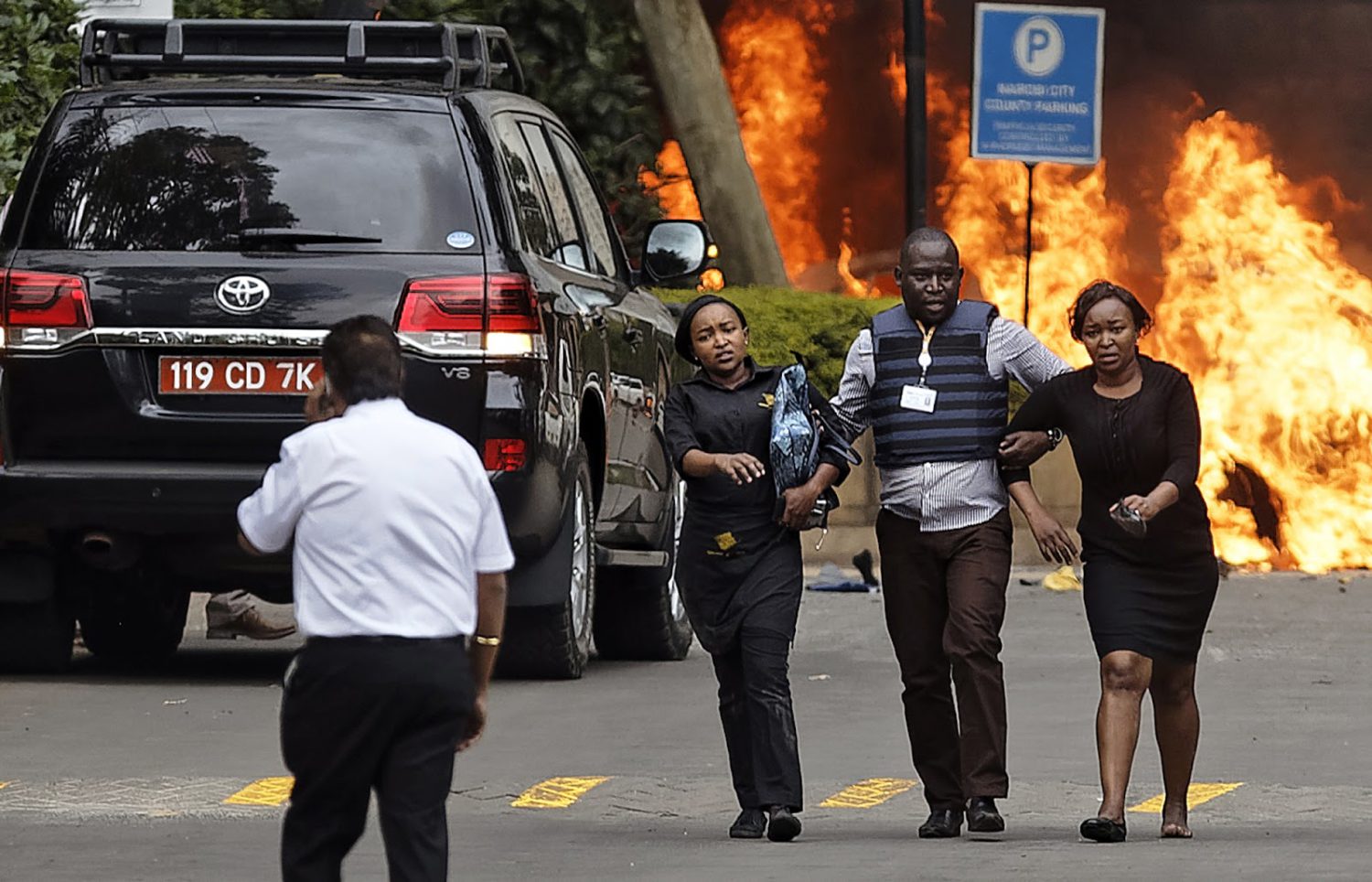The photo is graphic and sobering.
It shows what appears to be a man slumped over a table at a restaurant, an open laptop next to him. With blood from gunshots on his back, the man lies dead. In the distance, another fallen body.
They were victims of a terrorist attack Tuesday at an upscale hotel in Nairobi, Kenya.
The photo, credited to Khalil Senosi of the Associated Press, appeared on the New York Times’ website in a story about the attacks. (Warning: the photo in question appears in the story.) The photo set off an angry backlash on Twitter directed at the Times from those disturbed by the image.
Kimiko de Freytas-Tamura, the Times’ incoming East Africa Bureau Chief, tweeted out an explanation saying it was Times’ policy to post photos of casualties as long as the faces of the victims are not seen. Then de Freytas-Tamura tweeted an apology that has since been deleted. It read:
I apologize on behalf of @nytimes and @nytphoto for causing anger and anguish over the photos that have been published with our reporter. Thank you.
While the controversy involving the photo pales in comparison to the awful tragedy, the Times’ decision to run the photo brings up the ethical question that editors everywhere grapple with any time there is a horrific event.
Should the Times have run the photo?
There is no easy answer.
The first question any news organization must ask when deciding to publish violent images is: WHY show it?
In other words, what is the news value? Does the public need to see such an image to fully grasp what happened? Does the public need to see such a photo to confirm or disprove the official account of the events?
An argument could be made that a writer’s words could accurately describe the scene without being as disturbing as the image. In addition, when it comes to an act of terrorism, might publishing such a photo actually advance the cause of the terrorists, showing the damage they caused, thus fueling dread and panic?
Also this: The photo on the Times website came without warning. As a reader, you didn’t know you were going to see a photo of dead people until you actually saw it.
Those are arguments to not run such a photo or, at least, warn readers of its graphic content.
But the Times defended its decision in a statement:
We have heard from some readers upset with our publishing a photo showing victims after a brutal attack in Nairobi.
We understand how painful this coverage can be, and we try to be very sensitive in how we handle both words and images in these situations.
We want to be respectful to the victims and to others affected by the attack.
But we also believe it is important to give our readers a clear picture of the horror of an attack like this. This includes showing pictures that are not sensationalized but that give a real sense of the situation.
We take the same approach wherever in the world something like this happens — balancing the need for sensitivity and respect with our mission of showing the reality of these events.
The Times is right in that it has an obligation to give its readers a clear picture of the horror. This photo absolutely showed the devastation caused by this attack and, even though it didn’t show the faces of the deceased, the images of two people whose lives ended while sitting in a restaurant humanized the tragedy in a way no words could. That right there is the strongest case to run the photo.
There was some question of whether or not the Times would have run such a photo if the scene had played out in midtown Manhattan as opposed to halfway around the world. That certainly is a valid question. One could only hope, but not really know for sure, that the Times’ decision would have been the same.
News organizations can’t have blanket policies for when to run violent content. Decisions need to be made on a case-by-case basis. While readers should not be subjected to gratuitous violence, there are occasions when all of us must face the realities of the world, even when those realities upset us. If we’re going to consume news, we have to accept that there will be times when the news and how it is told is disturbing. Sadly, this is one of those times. The Times needs to respects its readers — not by holding back information, but by presenting it to them.
Is this a tough image? Yes, no question. But should the Times have run it? Yes, no question.
Clarification: The @nytphoto Twitter handle referenced in the tweet by Kimiko de Frevtas-Tamura has been suspended for three years and was never associated with the New York Times.







